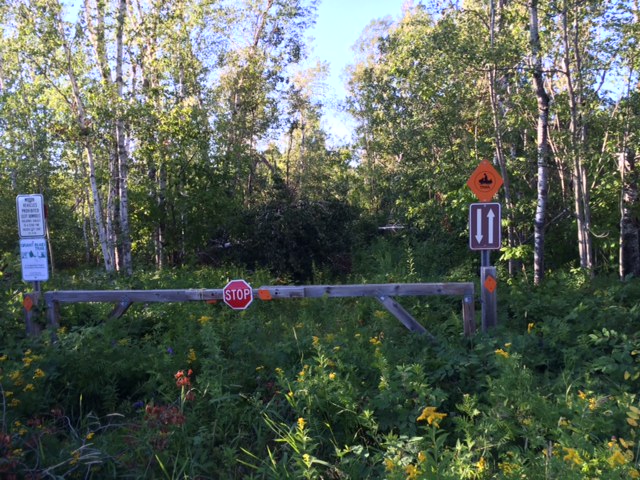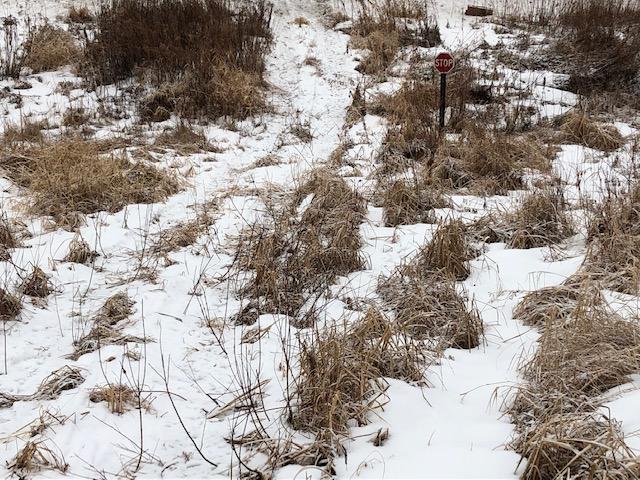 Can it get any worse? Not really. 40 degree temps melted what little snow we had left and dumped a bunch of melt water into the swamps, lakes and streams and thinned out the ice, it looked as though we were doomed. Luckily it got rally cold again to freeze things back up in the woods but the lake ice has suddenly become a little sketchy in places. We need snow, and quite frankly we are getting sick of this same old story year after year.
Can it get any worse? Not really. 40 degree temps melted what little snow we had left and dumped a bunch of melt water into the swamps, lakes and streams and thinned out the ice, it looked as though we were doomed. Luckily it got rally cold again to freeze things back up in the woods but the lake ice has suddenly become a little sketchy in places. We need snow, and quite frankly we are getting sick of this same old story year after year.
Author Archives: John Hartley
12/14/18 NORTHEAST MINNESOTA SNOWMOBILE TRAIL CONDITION UPDATE
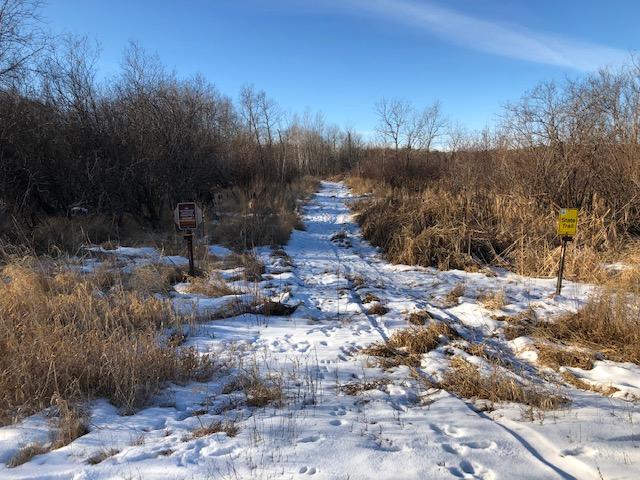 We wish we had better news for you but things are looking pretty bleak. There has not been any new snow and the temps are pushing 40, melting what little snow we have. Word from the UP is that trails there are deteriorating rapidly with temps in the mid forties so there aren’t a lot of options unless you head down to North Carolina or Virginia where they recently got 18 inches of snow that they don’t want. If you are like us we know you are going crazy seeing that on TV as we sit here snowless. The news isn’t all bad though, the cold weather we had has allowed the clubs to get out and do some very effective trail clearing and maintenance and word from around the state is that the trails are in the best shape they have been in for years, all we need is snow. So in an effort to get us some snow we have pulled out all the stops- we asked for Christmas snow from Santa at the Mall and we even asked the girl who played Mary at the local church Christmas program to put in a good word for us with the man upstairs! So let’s all do those snow dances and bust out the snowman picture your kid made in second grade and put it on the fridge to try to get some good snow Karma going for us!
We wish we had better news for you but things are looking pretty bleak. There has not been any new snow and the temps are pushing 40, melting what little snow we have. Word from the UP is that trails there are deteriorating rapidly with temps in the mid forties so there aren’t a lot of options unless you head down to North Carolina or Virginia where they recently got 18 inches of snow that they don’t want. If you are like us we know you are going crazy seeing that on TV as we sit here snowless. The news isn’t all bad though, the cold weather we had has allowed the clubs to get out and do some very effective trail clearing and maintenance and word from around the state is that the trails are in the best shape they have been in for years, all we need is snow. So in an effort to get us some snow we have pulled out all the stops- we asked for Christmas snow from Santa at the Mall and we even asked the girl who played Mary at the local church Christmas program to put in a good word for us with the man upstairs! So let’s all do those snow dances and bust out the snowman picture your kid made in second grade and put it on the fridge to try to get some good snow Karma going for us!
TODAY ON THE TRAIL 12/9/18
SNOWMOBILE BRAIN
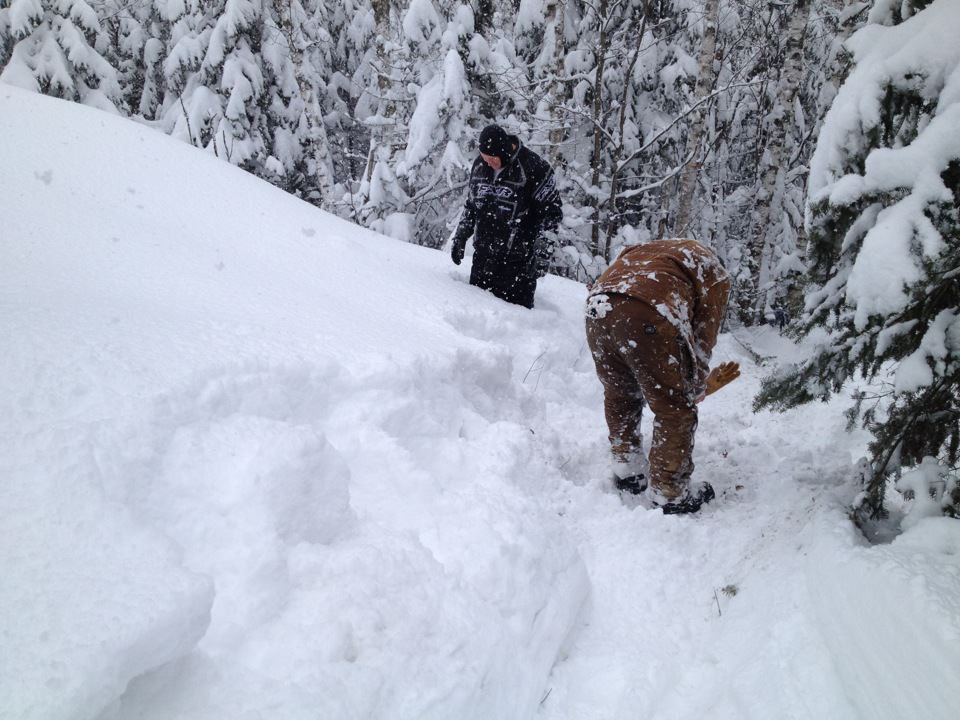 Buddies, we all have them. Your buddies may be childhood friends or friends that you met later in life in high school or college or at work, regardless of where you met them one thing remains true: when men are left with their buddies what they do may seem logical to them at the time but to the outside world it makes no sense to any logical person. I think this really starts when we are children and some of that childhood stupidity never really leaves us. I’m sure that every guy reading this can look back on something they did as a kid and wonder “What the hell was I thinking?” You know- going to the outdoor hockey rink in the summer time and building ramps from the hockey boards so you can jump your BMX bike, making the jumps higher and longer until finally someone breaks their arm or loses a few teeth, or climbing higher and higher in a tree and jumping out of it until someone knocks themselves out or breaks a leg, or seeing who can go farthest out on the thin ice of the shallow pond in the woods before someone breaks through, or having fights with bottle rockets or roman candles or firecrackers. As we grow older things like that seem pretty dumb and we grow out of them, or do we? I think back to a recent incident where two of my friends were going to hang out while their wives went shopping at the mall. One couple showed up at the others house and right after the wives got in the car and left my friend said “hey check it out, I just bought two pairs of boxing gloves and some head gear.” About fifteen minutes later they had moved all of the furniture out of the living room and were boxing each other. Their wives came back from the mall later that afternoon to find their husbands standing in the middle of the living room taking turns punching each other in the head as hard as they could trying to knock each other out. Now, most guys reading this story are thinking, “Yeah, if I had head gear and boxing gloves I’d do the same thing, that makes perfect sense,” while most women reading this story are thinking, “What a couple of idiots!”
Buddies, we all have them. Your buddies may be childhood friends or friends that you met later in life in high school or college or at work, regardless of where you met them one thing remains true: when men are left with their buddies what they do may seem logical to them at the time but to the outside world it makes no sense to any logical person. I think this really starts when we are children and some of that childhood stupidity never really leaves us. I’m sure that every guy reading this can look back on something they did as a kid and wonder “What the hell was I thinking?” You know- going to the outdoor hockey rink in the summer time and building ramps from the hockey boards so you can jump your BMX bike, making the jumps higher and longer until finally someone breaks their arm or loses a few teeth, or climbing higher and higher in a tree and jumping out of it until someone knocks themselves out or breaks a leg, or seeing who can go farthest out on the thin ice of the shallow pond in the woods before someone breaks through, or having fights with bottle rockets or roman candles or firecrackers. As we grow older things like that seem pretty dumb and we grow out of them, or do we? I think back to a recent incident where two of my friends were going to hang out while their wives went shopping at the mall. One couple showed up at the others house and right after the wives got in the car and left my friend said “hey check it out, I just bought two pairs of boxing gloves and some head gear.” About fifteen minutes later they had moved all of the furniture out of the living room and were boxing each other. Their wives came back from the mall later that afternoon to find their husbands standing in the middle of the living room taking turns punching each other in the head as hard as they could trying to knock each other out. Now, most guys reading this story are thinking, “Yeah, if I had head gear and boxing gloves I’d do the same thing, that makes perfect sense,” while most women reading this story are thinking, “What a couple of idiots!”
Now, fast forward to snowmobile season, these are exactly the same friends that it is not okay to ride alone with, you all know who I’m talking about, that one friend of yours that infects you with what my wife calls “Snowmobile Brain.” To protect his identity I will call this particular friend Steven. Sure, it’s okay to ride with Steven when you are in a big group, because as a big group you have to be responsible and smart, but if it’s just the two of you then that boyhood stupidity takes over, usually this stupidity starts with a sentence like “Do you think we can _________” or “Do you think we should try _________.” Either way you know your answer to that question will always be yes, because you have contracted snowmobile brain from your friend Steven. “Hey, John, do you think we could clear that road approach? Hey do you think this nasty muddy 3 mile long swamp is frozen enough for us to get to the other side even though its early December? Hey do you think we can skip all the way across that stretch of open water? Hey, do you think if I jump my sled off this cliff face will I clear those rocks? Hey, do you think we can make it through that stand of pine trees?” And of course when you have contracted snowmobile brain the answers to all of those questions will be “Yes!” You know you have found your version of Steven when your wife asks you “Who are you riding with today?” and when you tell her she says “Oh no, try not to do anything stupid.” The funny thing is that when you are riding with Steven, his wife is saying the same thing, “Oh no, every time you ride with him, I am either coming with the trailer to pick up a broken sled or bringing someone to the emergency room.” Not exactly a shining vote of confidence.
The truth behind the matter is that boys do stupid stuff and Steven just happens to be a good enough friend that he enables you to tap into your inner boyhood stupidity, so you wind up doing things that you normally wouldn’t do with the other guys you ride with. But Steven isn’t all bad. It was because of friends like Steven that things like snocross and X Games got started. And sometimes when you are riding with Steven you do make it to the other side of the road approach, sometimes you do clear those rocks on your drop in, and sometimes you can make it through that stand of pines and the payoff is epic! Plus Steven did miraculously guide you to the other side of the lake when the two of you got caught in a big storm and the trail markers disappeared, he also towed you out of the woods when you broke down, and he also called you up at midnight and suggested going for a late night ride which turned out to be one of the best rides of the year. So for every time you’ve done something stupid, you’ve also managed to have a great time and have good stories to tell at the end of the day around the fire, and that is what snowmobiling is all about.
NORTHEAST MINNESOTA SNOWMOBILE TRAIL CONDITION UPDATE 11/22/18
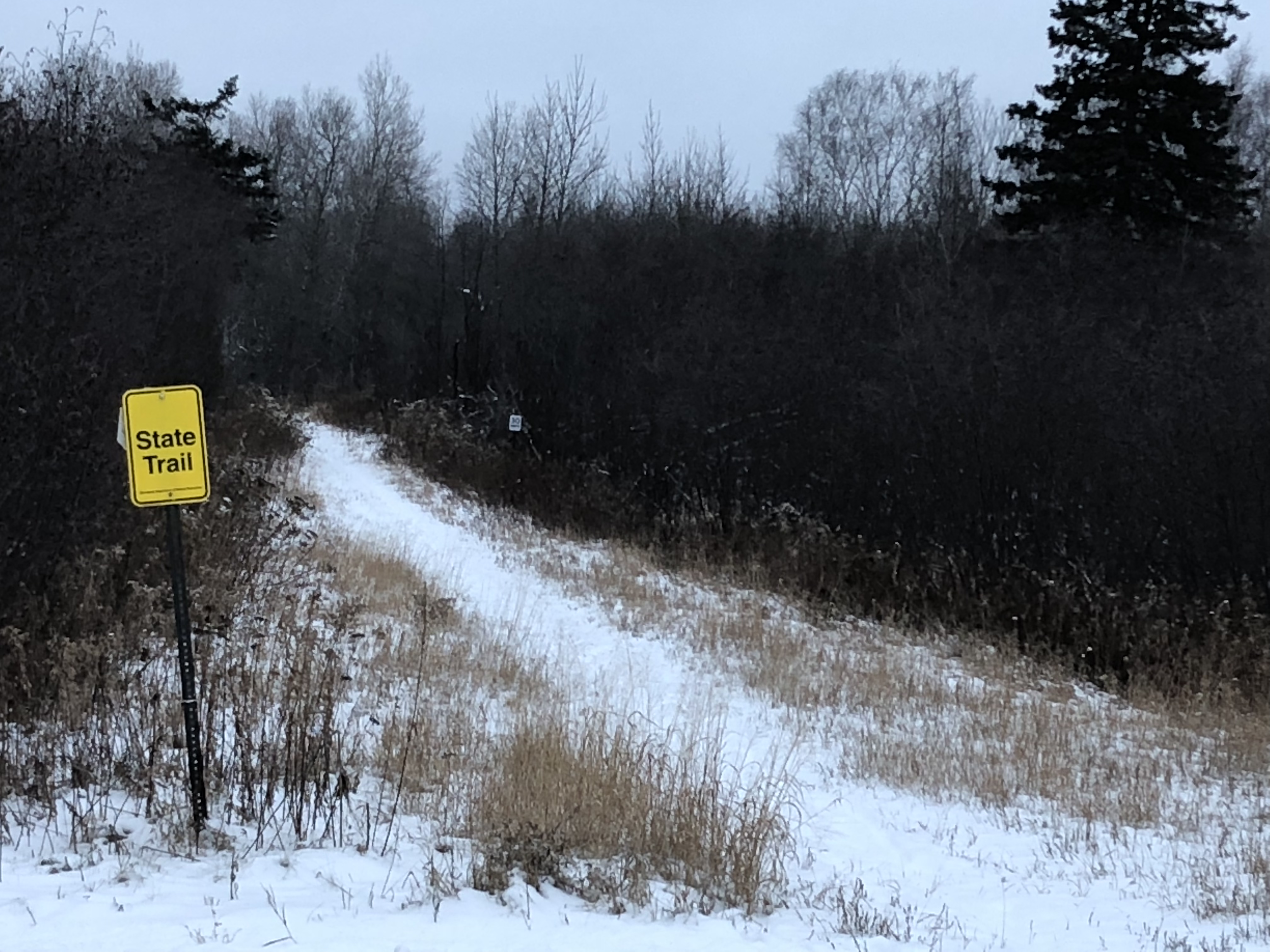 So far so good! It’s been cold and little by little we keep adding snow. A warm up is supposedly coming Friday but then snow comes right behind it. So as it stands right now there is about 5 inches in Duluth, about 6 around Finland and some scattered pockets over 12 and consistent depths over 12 by Grand Portage. We are watching things closely and with any luck there might actually be some trails that open on time December 1st!
So far so good! It’s been cold and little by little we keep adding snow. A warm up is supposedly coming Friday but then snow comes right behind it. So as it stands right now there is about 5 inches in Duluth, about 6 around Finland and some scattered pockets over 12 and consistent depths over 12 by Grand Portage. We are watching things closely and with any luck there might actually be some trails that open on time December 1st!
THE SCIENCE BEHIND MOGULS
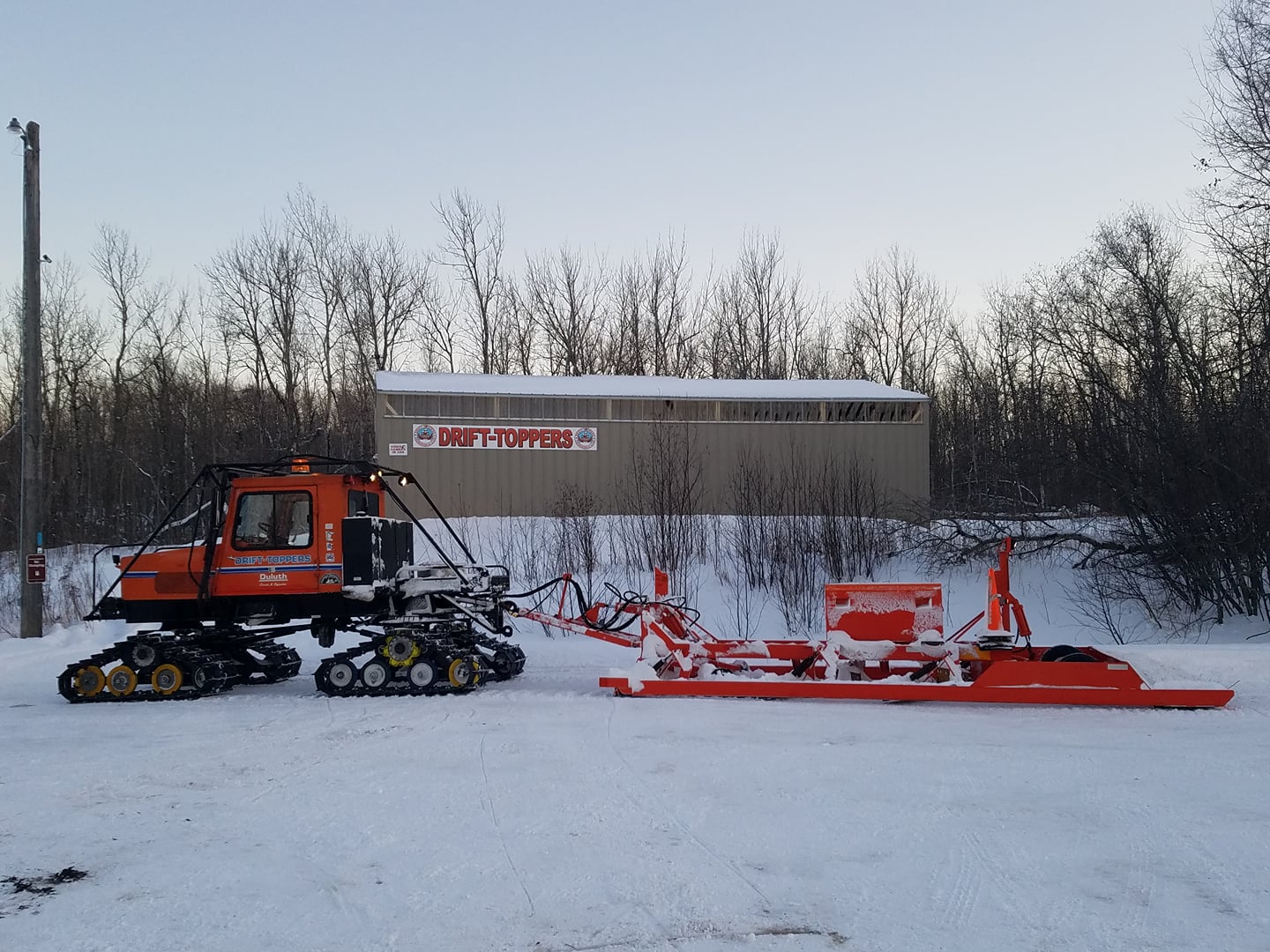 Have you ever wondered why your local trail develops horrific moguls that rearrange your internal organs as you ride down the trail? Well, we have the answer.
Have you ever wondered why your local trail develops horrific moguls that rearrange your internal organs as you ride down the trail? Well, we have the answer.
Moguls. We’ve all experienced them and, it’s safe to say, that none of us are fond of them. Moguls are the entire reason that trail groomers for snowmobile trails exist. Over time every trail will fall victim to the mogul, but understanding the mogul can actually help you reduce their frequency and aid in their destruction.
There are multiple factors that contribute to the formation of moguls but they all pale in comparison to the main culprit, snowmobiles themselves.
First let’s look at one of the smaller contributors to mogul development: trail surface. Many people believe that an uneven trail surface with natural dips and bumps in the terrain contribute to mogul development and to some degree they are correct. An uneven surface causes the suspension of the snowmobile to rise and fall as it tries to compensate for the uneven terrain, therefore when the suspension falls down into a dip in the trail the track naturally digs its way out of the hole, displacing snow at the bottom of the hole and piling it up behind it, further defining the “bump” in the trail, the next sled will then compress that mounded up snow, reinforcing the bump and subsequently falling into the hole and digging itself out as well, when the track comes out of the hole it is still digging and creates a new smaller hole following the previous hole before it fully recovers to being on flat surface, creating a new “bump in the road,” this constant expansion and contraction of the suspension continues the pattern and after a while you create a series of bumps aka moguls. An ungroomed trail on a naturally uneven surface will most definitely create moguls and these moguls will persist regardless of snow depth as the peaks of these bumps will be hard and the valleys soft so even when they are covered by new snow the process will continue. The good news is that once the snow has reached a depth to fill in uneven terrain a groomer can eliminate these types of moguls by putting a solid surface of trail over the top of them, therefore those that believe the underlying cause of moguls is an uneven trail surface are only partially correct, that is indeed the case until a groomer does its work and then what terrain lies underneath the snow matters much less than how the trail surface is prepared by the groomer.
So now we have a beautiful flat trail created by the hard work of your local club but after a full weekend of use we are back to moguls again, how did this happen? There are two answers to that question: #1 the snowmobile rider and #2 the snowmobile suspension. Many snowmobilers try to blame the power and speed of modern snowmobiles for mogul development but it is not the snowmobile that is the problem, it is the rider. Remember that any deviation in the surface of the trail affects the suspension. You will often notice that moguls first form before and after corners and before and after road crossings. The reason for this is that any sudden decrease or increase in speed makes the track spin or rapidly changes its rate of rotation which makes it dig into the surface of the trail creating a small mound of snow, the next snowmobile over that mound compresses it and the suspension reacts and digs out a little bit of snow after the bump creating another bump and so on. In short, if you hammer the throttle after a road crossing you create a mound of snow and therefore create moguls, when you hammer the throttle after a corner you create moguls, add paddle tracks, high horsepower and the modern suspension and you amplify these conditions. In short if you managed to keep an even speed you would dramatically reduce the number and frequency of moguls, any time you radically change speeds on the trail you contribute to the mogul problem.
There is a myth out there that back in the days of lower horsepower sleds that moguls were less common, that myth is 100% false. Whether it be bogey wheels or slides, 10 horsepower or 150 horsepower, moguls have always existed. Don’t agree? Try riding a trail after a vintage ride that had nothing but vintage sleds on it, trust me, you will see some of the worst moguls ever, this is why grooming equipment came into existence. First it was an old box spring mattress towed behind a snowmobile. That helped initially but it became evident that although this mattress set up smoothed things out for a little while, the moguls quickly returned, that is because all that was happening was the tops of the moguls were being knocked down into the ruts, but the snow in the mounds was still hard while the snow in the dips was soft and after a few sleds rode by the dips were quickly dug out again. This led to the development of modern grooming equipment with a series of blades designed to cut the tops of the mounds off and churn the snow adding moisture to it so as it settles into the dips the snow is compacted by the drag and the moisture in the snow freezes forming a solid base. It is essential for a groomer to get down to this solid base when grooming to help prevent new mogul formation. This is also why groomers operate over night, because it is essential for that trail to have time to set up/ freeze. When a snowmobile goes over a trail that has just been groomed without allowing the snow time to set the base weakens and makes it easier for the mogul process to begin again.
The battle against moguls is a never ending task, but there are two things that you as a snowmobiler can do to help prevent them. First, be courteous and try to keep an even speed throughout your day on the trail especially trying to avoid any sort of activity that results in you creating a mound of snow and second, join a snowmobile club and become a groomer operator, that way you can be sure to have great trails every time you ride!
11/10/18 NORTHEAST MINNESOTA TRAIL CONDITION UPDATE
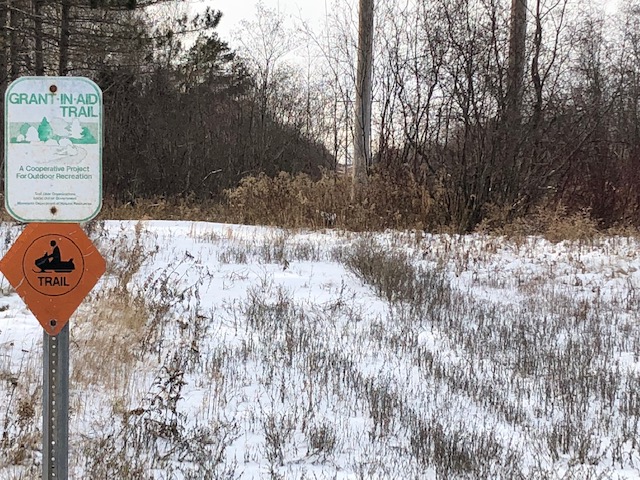 Here we go- our first trail update of the season! There has been some snow and cold so far which means the swamps are freezing and many lakes are starting to make ice! Parts of the North Shore picked up decent snow this week including over a foot at Grand Portage, also our friends in the UP got hit with over a foot as well! Lets collectively keep sending out snow vibes and get ourselves a season that starts on time!!! Now that the cold and snow is in place we will be hitting you often with all sorts of Blogs and trail updates so stay tuned!
Here we go- our first trail update of the season! There has been some snow and cold so far which means the swamps are freezing and many lakes are starting to make ice! Parts of the North Shore picked up decent snow this week including over a foot at Grand Portage, also our friends in the UP got hit with over a foot as well! Lets collectively keep sending out snow vibes and get ourselves a season that starts on time!!! Now that the cold and snow is in place we will be hitting you often with all sorts of Blogs and trail updates so stay tuned!
DON’T BE “THAT GUY”
How many times have you heard the old saying “It just takes one bad apple to spoil the whole bunch?” Probably more than you can even count. There’s a reason that old sayings like this survive- because they are true. Unfortunately there are those among us who, for some unknown reason, can’t understand the point behind the saying and become that one bad apple that ruins everything for everybody. Once and a while I see things out on the trail that put me in a mood to go on a blog tirade, but I usually restrain myself. This year I have decided to get my usual in season frustrations with certain riders out of the way before the season starts so I can be done with it. I’m not talking about each individual rider here, let’s face it even the safest and smartest among us have made mistakes out on the trail and had a few close calls, but because we are responsible riders they were just that, close calls. What I am talking about here are those few bad eggs that are chronic abusers of the trail, lack any sort of trail etiquette and are just overall idiots that ruin the sport for everyone and get trails closed. We’ve seen them, we’ve heard about them, and some of you might even know one of them, so without further ado here are my biggest on trail pet peeves.
THE GUY THAT RIDES ON THE WRONG SIDE OF THE TRAIL: Believe it or not there are people out there that do not understand the ride right rule of the trail. How these idiots ever wound up on a snowmobile is beyond me but every year you read about them: some moron riding on the wrong side of the trail who hits and severely injures or kills someone. I can’t believe how often this happens because it is 100% avoidable. How do you go from staying on your side of the road every day when you drive a car to being so stupid that you can’t figure out that the same rule applies on the trail? People that cannot follow this simple rule and stay on the right side of the trail have no business ever being on a snowmobile.
THE GUY WHO CAN’T FOLLOW SIMPLE TRAIL SIGNS: This is the one thing that winds up getting trails closed all over the United States every year. The vast majority of snowmobile trails run through private property and in order to keep these trails open there are agreements made with land owners that are designed to keep snowmobile activity to designated areas, this results in a number of “Stay On Trail,” “Do Not Enter,” “No Snowmobiles Allowed,” and “No Trespassing” signs being posted along with residential area speed limit signs. I was out doing trail work one day in the middle of the season and watched someone completely ignore the clearly marked trail diamonds, multiple “Stay On Trail” signs, a “Do Not Enter” sign, a “No Trespassing” sign, and a “No Snowmobiles Allowed” sign and ride right onto private property and ride through the land owners yard just so he could cut off about 300 yards of rough trail. Needless to say the landowner came out of his house and threw a fit and I had to apologize for the moron who apparently cannot read plain English, needless to say if I had to renew that landowner’s trail easement that day he would have said no. It didn’t matter to him that thousands of riders obeyed the signs all year, all he cared about was the one jerk who rode through his yard.
THE GUY WHO THINKS THE TRAIL IS A SNOCROSS TRACK: We’ve all seen these riders, the ones who push the envelope of speed on the trail. Never mind that there are speed limits, these guys don’t care and speed like crazy. I’m not talking about opening up the throttle on a lake or long straight away, I’m talking about those that are ripping through the curves and riding way too fast for the trail. I’ve been riding at a pretty good pace when suddenly some guys blow by me like I’m standing still, then a half mile down the trail I see one of these same guys with his sled wrapped around a tree and a bone sticking through a hole in his bibs. Suddenly a casual ride becomes a guided tour for the sheriff’s rescue squad to show them where the idiot with a destroyed sled and broken bones is. NOT FUN.
THE GUY WHO HAS HAD ONE TOO MANY DRINKS AND DECIDES TO RIDE: This is another no brainer. “Hmm, I’m going to drink, become intoxicated and then get on a high horsepower vehicle and travel down an icy trail that is bordered by trees on both sides”- smart move. I have never understood this logic, and no matter how long the list of dead snowmobilers from driving while intoxicated gets it is never enough to keep people from doing it, and it’s only a matter of time before it catches up to them and adds a new name to the list.
THE OVERALL JERK: There are some things that people do on the trail that just ruin it for everyone by the stupid way they act or ride. One of my biggest pet peeves are people that cross a road and feel it necessary to hammer the throttle when they get on the other side and pile up a huge mound of snow- well guess what, that is the first step of starting a long chain of moguls (For more on this see my upcoming article on the science behind moguls). Then there are those that feel it is okay to eat a candy bar or have a bottled water and just throw their trash on the side of the trail, seriously WHY? You brought it out there, bring it back. This is the #2 reason trails get closed- because the snow melts and land owners find trash on their property- once again it is because of a handful of people that trails get closed.
Well, that’s it, rant over. Hopefully if you are one of these people or know one of them you can convince them that their actions ruin riding for everybody and maybe help save our trails and save lives. Nearly all snowmobile accidents can be prevented and we all want to be out there and have fun and come home safely. If we all followed the rules of the trail we can all make it home and we can keep the trails open for years to come.
SNOWMOBILE CLUBS NEED YOU NOW
As Labor Day passes and summer draws to a close, local snowmobile club meetings start ramping up. “I want you!” was the recruiting slogan for the US Army during World War I, and it is still a fitting slogan for today’s snowmobile clubs.
Have you ever wondered how that trail you ride on every winter manages to get groomed? Have you ever thought about how there are no trees or brush overhanging that trail to get in your way? Have you ever pondered how that bridge that crosses that creek in the middle of nowhere wound up way out in the woods like that? Have you ever stopped to think about how that snowmobile trail you are riding on is even there to begin with? Unfortunately these are a lot of the things that many snowmobile riders take for granted.
Snowmobile clubs are the backbone of the snowmobile trail system that so many of us enjoy. Every trail you ride on was made possible by an ordinary group of volunteers that spend untold hours securing easements from private land owners in order to build a trail. These same people then give up their weekends clearing brush, cutting fallen trees, dragging bridge materials out into the woods, constructing shelters and filing in washouts along the trail to get it ready for winter, then comes the signing and fencing for the trail and then endless hours in sub- zero temperatures at 2 AM grooming the trails to perfection, all so that you can have a great weekend ride. The reality is that without these people you would have no place to ride that nice new sled of yours. It is a misconception by many a snowmobiler that the state or province they live in are the ones managing the upkeep of the trail system- they are not. Yes, the various state DNR’s have a hand in how things are managed but the overwhelming majority of the work falls to club members. If you ride a snowmobile, then you need to be part of a club, it’s that simple. Clubs need people like you to help them function, even if you can only contribute one hour a year to help with trail maintenance, grooming or repairs, that one hour is one hour of work that at the moment isn’t being done.
Club members realize that everyone has lives and commitments and that some people can help more than others but no contribution of time or effort is too small and there isn’t a snowmobile club out there that wouldn’t welcome you and whatever you can bring to the table. The harsh reality is that snowmobile clubs need members and if there aren’t enough people to help, then work doesn’t get done, when work doesn’t get done trails close, and when trails close the sport as we know it dies.
6/21 POST A FEW DAYS LATE
 Well here we are again, just passing the longest day of the year- now the days start getting shorter and winter starts getting closer. As always we will be improving the site in the off season and ironing out a few things along with improving the trail condition section. Tune back in in September when we start giving you the latest news on trails and post a bunch of articles to get you pumped up for what we hope will be a snowy season. Until then have a safe summer so we can see you on the trails this winter!
Well here we are again, just passing the longest day of the year- now the days start getting shorter and winter starts getting closer. As always we will be improving the site in the off season and ironing out a few things along with improving the trail condition section. Tune back in in September when we start giving you the latest news on trails and post a bunch of articles to get you pumped up for what we hope will be a snowy season. Until then have a safe summer so we can see you on the trails this winter!
TIPS FOR SUMMER SNOWMOBILE STORAGE
 Winter is over- at least we think it is. It looks like May is actually going to provide us with some days over fifty degrees and no major snowstorms and, if we’re lucky, there might be some lakes in southern Minnesota with enough breaks in the ice to actually go fishing for the opener. Now I am waiting for a nice day to summerize the sled and put it away for the off season.
Winter is over- at least we think it is. It looks like May is actually going to provide us with some days over fifty degrees and no major snowstorms and, if we’re lucky, there might be some lakes in southern Minnesota with enough breaks in the ice to actually go fishing for the opener. Now I am waiting for a nice day to summerize the sled and put it away for the off season.
Summer storage is an essential part of keeping your snowmobile ready to go and in good running order and how you do it makes all of the difference in the world. Follow these simple steps and you will be very happy next fall.
1. WASH AND WAX YOUR SNOWMOBILE: This is a crucial thing to do in my opinion. Undoubtedly your snowmobile has picked up some salt and grime from road crossings or ditch banging or trailering and you need to get rid of it before it starts eating away at the metal and rubber. Just like a car, your snowmobile can use a good waxing also. Waxing your sled protects the hood and the metal and helps repel dirt, dust, water and to top it all off it makes your sled look sweet on the trails. As you are washing your sled it is a great time to check for loose bolts and broken parts, it’s better to fix that stuff now than to be caught off guard at the beginning of the season when we get that first big snow (Yeah right, like that ever happens).
2. FUEL STABILIZER: It is essential to put fuel stabilizer in with the gas in your tank. For years it was common practice to run the tank dry but now the consensus is to fill your tank and add fuel stabilizer, this keeps moisture from building up in your tank and keeps all of the fuel lines fresh. Make sure you run the engine for a while to get the fuel stabilizer throughout the system to protect everything.
3. GREASE AND LUBE EVERYTHING: I always like to grease my sled up after I have cleaned it, it gets any water out of your joints and protects everything from corroding. This is also when I change out my chain case oil and basically perform all of the other maintenance that should be done on the sled so when winter hits you are 100% ready to go. I know a lot of guys that spray things down with WD-40 as well because it helps repel moisture over the summer and keeps things from rusting. I’ve found this to be a pretty effective tool.
4. PROTECTANT ON THE PLASTIC AND RUBBER: I always put Armorall on the plastic and rubber and it has helped keep everything in pristine condition. There are a variety of other sprays available at your dealer that you can use as well that are specifically designed to shine and protect your sled.
5. FOGGING/ SHUTTING DOWN: Several new sleds have a summer shut down procedure built in, it’s always a good idea to fog your engine too as it just keeps everything protected.
6. COVER IT UP: Once everything is dry it is best to cover your sled to protect it from dust and sun damage.
7. A LIFT: Ideally if you can get a sled lift and get your sled up off the ground it does wonders for prolonging the life of your suspension. If a snowmobile lift isn’t in your budget rollers are also nice and they make it easy to move the sled around the garage. At the very minimum you should get the track off the ground- yes it puts added pressure on the front suspension but the only thing in contact with the ground will be your carbides and those are a lot cheaper to replace than a rotted out track.
8. REPLACE AND REPAIR ANYTHING BROKEN: Summer is a great time to work on your sled, primarily because it is not 20 below zero
9. VISIT YOUR SLED AND START IT ONCE A MONTH: People will argue about this one but on the first of every month I go out and start up all of my sleds and run them for a few minutes (Don’t run them too long because they will overheat quickly) I find that this keeps everything moving and keeps your snowmobile an overall a happier machine, it also gives you the opportunity to check for mice as they like to build nests in a nice comfy snowmobile chassis protected by a snowmobile cover. The best part of your monthly sled visits is that it keeps your winter blood flowing and keeps your sled from getting lonely while it waits month after month for it to snow.
If you follow all of these tips you will be the first one out when winter comes while everyone else is scrambling to get their rides ready and you can spend summer nights in your garage with a beer knowing that when the temperature starts dropping that adrenaline machine in the corner will be ready to go.
IS IT TIME TO REVISIT THE GRANT-IN-AID TRAIL DATES IN MINNESOTA?
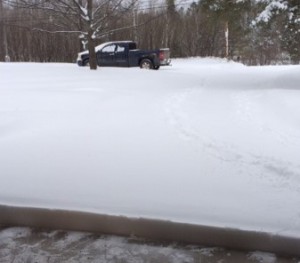 This past week, nearly the entire state of Minnesota was pummeled by a record setting snowstorm, but is April snow that uncommon? No. Granted, by April 1st often times spring has already hit the Twin Cities but up North and especially in the Arrowhead where Lake Superior adds its two cents worth of snow to the higher elevations all winter long, the ground cover stays fairly deep well past the 1st of April. In fact, this part of the state has had good riding conditions past April 1st in five of the last ten years with ground cover of over 36 inches! But yet the Grant-In-Aid trails all close their gates on April 1st leaving hundreds of miles of snowmobile trails illegal to ride. The idea of extending the riding dates past April 1st to possibly April 15th have been tossed around several times and we here at snowmobiletrail.com want your input on this topic. Do you think extending the season to April 15th is a good idea? You can answer in the comment section below or leave your comments on our facebook page. Before you are quick to answer, however, let’s examine some of the pluses and minuses of this plan.
This past week, nearly the entire state of Minnesota was pummeled by a record setting snowstorm, but is April snow that uncommon? No. Granted, by April 1st often times spring has already hit the Twin Cities but up North and especially in the Arrowhead where Lake Superior adds its two cents worth of snow to the higher elevations all winter long, the ground cover stays fairly deep well past the 1st of April. In fact, this part of the state has had good riding conditions past April 1st in five of the last ten years with ground cover of over 36 inches! But yet the Grant-In-Aid trails all close their gates on April 1st leaving hundreds of miles of snowmobile trails illegal to ride. The idea of extending the riding dates past April 1st to possibly April 15th have been tossed around several times and we here at snowmobiletrail.com want your input on this topic. Do you think extending the season to April 15th is a good idea? You can answer in the comment section below or leave your comments on our facebook page. Before you are quick to answer, however, let’s examine some of the pluses and minuses of this plan.
The upside of extending the season is obvious- More riding time. While there has been good snow cover past the April 1st cutoff date five of the last ten years, during that same time period the trails have only opened on time (December 1st) just ONCE!
THE NEGATIVES
Yes there are negatives to extending the season.
1. Inconvenience to Land Owners: The biggest negative is that you are asking landowners for an extra 2 weeks of having snowmobiles cross their land, which may make it harder to convince them to sign lease agreements. Plus snowmobilers often still ride when the trails are getting thin in some areas and on GIA trails that could mean damage to the trail surface which also would deter land owners from signing leases. However, one could argue that if you are a GIA land holder you expect snowmobilers to ride when there is snow.
2. Added Groomer Commitment/ Expense: For many of the northern clubs groomer funds are already running thin and an extra two weeks of the season could potentially mean an extra two weeks of grooming and with money already being tight this could put an additional financial strain on some clubs- but, if the season continues to start late you would probably just wind up shifting the early December money to cover the additional early April grooming time.
3. Ice: This is a killer for both riders and groomers. Often times Ice bridges, swamps and lakes begin to thaw making it hard or impossible for groomers to groom in late March. Having trails open in April could mean that the ice is no longer safe. Most state trails like the CJ Ramstad North Shore Trail have been constructed to limit the amount of swamp land that they go through, whereas many GIA trail traverse large tracts of swamps, streams and lakes which often delay their opening and prompt frequent early closures. These trails would still have to be closed even if snow cover on other parts of the trail is adequate.
4. Parking: Many parking lots for GIA trails are in fields that are normally frozen in the winter, when these areas thaw it may be difficult to get a truck and trailer safely in and out of these temporary winter parking lots.
So as you can see there are both good and bad sides to this coin, but as long as we keep getting pummeled with these late season storms, this question will keep coming up, especially when you are looking at a trail that has two feet of fresh powder on it that you can’t ride on.


